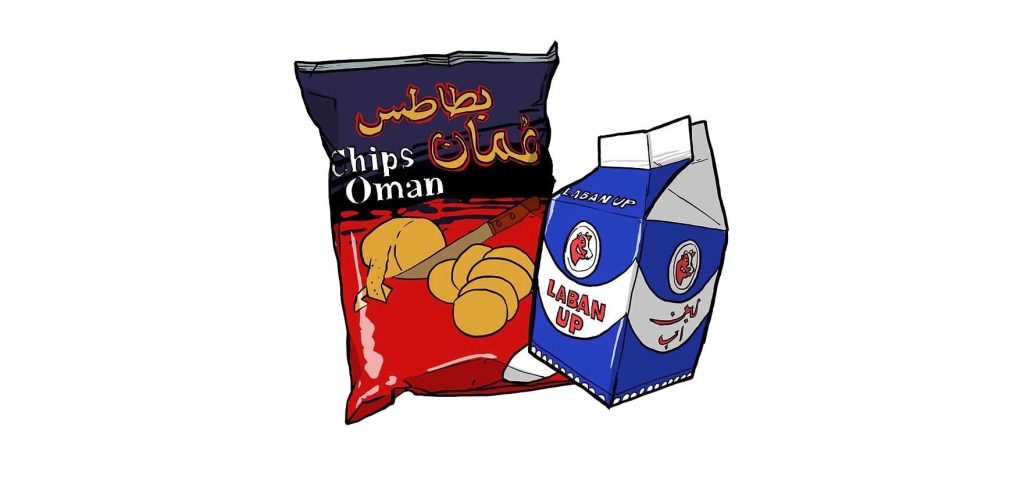
Rowyal, with years of experience and over 12 years of presence in Oman (Muscat) and Iran, is a leading company in the field of product exports. Our expertise lies in connecting markets and ensuring quality products reach global destinations efficiently. With a proven track record, we specialize in navigating complex logistics and delivering tailored solutions to our clients. For more information, please contact us at +98-9171199398 or email info@Rowyal.com.
Oman, a key member of the Gulf Cooperation Council (GCC), boasts a growing economy with a burgeoning demand for diverse food products. In recent years, Oman has seen substantial urbanization, population growth, and shifts in consumer behavior. These changes have led to an increase in demand for imported foodstuffs, making Oman an attractive destination for food exporters. The country’s limited agricultural capacity, influenced by its arid climate, further drives the necessity for food imports.
The government of Oman has been actively promoting food security and ensuring that the nation remains self-reliant. However, the reality of agricultural production constraints means that the nation is heavily dependent on imports, especially in categories like dairy, grains, fruits, and processed foods. As a result, food exporters around the world see significant potential in Oman’s food market. For businesses looking to export to Oman in 2025, understanding the market dynamics and high-demand products will be key to success.
Oman’s Demographic Profile and Food Consumption Trends:
Oman’s population is projected to grow steadily through 2025, with a younger, more urbanized demographic driving food consumption trends. The youth, especially those living in urban centers such as Muscat and Salalah, are increasingly drawn to global food trends. This shift has made international food products, especially processed and convenience foods, more appealing.
With more women entering the workforce, household dynamics are changing, leading to a higher demand for quick and easy-to-prepare food items, as families now have less time to cook traditional meals. This shift has led to a rise in the demand for processed and packaged food, as well as healthy snack options. Additionally, there is a growing interest in organic and health-conscious foods, as Omani consumers become more aware of their health and wellness.
Changing family structures and a growing expatriate population are also influencing food preferences. The expatriate community in Oman, which hails from various regions including South Asia, Europe, and the Arab world, brings with it diverse culinary demands. Food importers and exporters can capitalize on this by catering to the wide-ranging tastes and preferences of this multicultural population.

Trade Policies and Government Regulations for Food Imports:
Oman’s government has taken significant steps to encourage food imports and ensure food security. Trade policies are designed to be business-friendly, with reduced tariffs on essential foodstuffs and agreements in place with several countries to promote the free flow of goods.
One of the key strategies driving food imports is Oman’s Vision 2040, a long-term plan aimed at diversifying the economy beyond oil and gas. Part of this vision includes improving food security by ensuring a steady supply of affordable, high-quality imported food. The government has set up several free trade agreements (FTAs) with countries such as the United States, members of the GCC, and other global trading partners, easing the process for food exporters.
To export foodstuffs to Oman, businesses must adhere to local regulations. This includes proper labeling (in both Arabic and English), halal certification for meat products, and compliance with the food safety standards set by Oman’s Ministry of Agriculture and Fisheries. Oman’s food import laws emphasize strict hygiene and quality control, with food products undergoing rigorous checks at ports and entry points to ensure they meet the country’s standards.
For exporters aiming to tap into the Omani food market, understanding the specific products in high demand is crucial. Below are the top foodstuffs that are expected to perform well in Oman in 2025.
Canned Goods
The demand for canned goods in Oman has been on a steady rise. As the pace of life quickens in urban centers, consumers are increasingly seeking out convenient food options that can be prepared quickly and stored for longer periods. Canned vegetables, fruits, meats, and fish are particularly popular among Omani households.
Exporters of canned goods should focus on quality, shelf life, and packaging that aligns with local consumer preferences. Canned beans, peas, corn, and tuna are staples in the Omani diet. As the demand for convenience grows, canned meals such as soups, stews, and ready-to-eat dishes will also gain traction in the market.
Spices and Seasonings
Spices play a central role in Omani cuisine, which is known for its rich flavors and diverse range of spices. Oman imports a significant portion of its spices from India, Pakistan, and other neighboring countries. Spices such as cumin, coriander, turmeric, and black pepper are widely used in everyday cooking.
For exporters, spices offer a lucrative opportunity, especially for those who can provide high-quality, sustainably sourced, and organic options. Blended seasonings and spice mixes tailored to Omani tastes, such as those used for traditional dishes like biryani, kabsa, and shuwa, are also in high demand.
Tomato Paste
Tomato paste is a kitchen staple in Oman and is used in a wide range of dishes, from stews to curries. Its popularity stems from its versatility and the convenience it offers in cooking. Oman imports significant quantities of tomato paste from various countries, particularly in the Middle East and Europe.
As consumer preferences shift toward higher-quality food products, there is an opportunity for exporters to supply premium tomato paste with rich flavor profiles and clean labels. Products that emphasize natural ingredients and are free from preservatives and artificial additives will likely be more appealing to health-conscious consumers.
Beverages
The beverage market in Oman is highly dynamic, with increasing demand for non-alcoholic drinks. Soft drinks, juices, bottled water, and energy drinks dominate the market, with global brands taking the lead. However, there is a growing shift toward health-focused beverages, including natural juices, flavored water, and herbal drinks.
Exporters offering innovative beverage options that cater to health-conscious consumers, such as plant-based drinks, cold-pressed juices, and fortified beverages, are likely to see success in Oman. Additionally, the market for dairy alternatives such as almond milk, soy milk, and oat milk is expanding, particularly among younger, health-conscious consumers.
Snack Foods
Oman has a growing snack culture, with consumers favoring both traditional snacks and modern, convenience-driven options. Chips, biscuits, chocolate bars, and nuts are some of the most popular snacks in the market. Additionally, there is a rising demand for healthy snacks such as dried fruits, granola bars, and protein-rich snacks.
Exporters that can provide high-quality, health-oriented snacks will find strong demand in Oman. Products that cater to the increasing interest in fitness and wellness, such as gluten-free, low-sugar, or high-protein snacks, are expected to perform well in the market.

Understanding the competitive landscape in Oman’s food import market is essential for exporters aiming to establish a foothold in the region.
Key Exporting Countries
Oman sources a large portion of its imported food products from nearby countries such as the United Arab Emirates, Saudi Arabia, and India. These countries benefit from their geographical proximity and strong trade relationships with Oman. The UAE, in particular, serves as a major hub for food distribution in the region, with many products passing through Dubai before reaching Oman.
In addition to the GCC countries, Oman also imports significant quantities of foodstuffs from countries in Europe, such as France, Germany, and the Netherlands, which supply dairy products, processed foods, and packaged snacks. India remains one of the largest suppliers of grains, spices, and fresh produce to Oman.
Major Players in Oman’s Import Industry
Several major companies dominate the food import and distribution sector in Oman. Companies like Khimji Ramdas, Areej Vegetable Oils & Derivatives, and Al Jazeera International Catering serve as the key players in importing and distributing foodstuffs across Oman. These companies have well-established supply chains, extensive distribution networks, and strong relationships with global food brands.
For exporters looking to break into the Omani market, partnering with these established importers can provide valuable insights into consumer preferences and help navigate the complexities of Oman’s regulatory landscape.
For food exporters interested in entering the Omani market, understanding the logistical, regulatory, and cultural factors that influence success is critical.
Understanding Oman’s Import Regulations
Oman has strict regulations governing the import of food products to ensure consumer safety and maintain the quality of imported goods. Exporters must comply with labeling laws that require packaging to display all relevant information in both Arabic and English. Additionally, all food products must be accompanied by a certificate of origin and halal certification for meat products, verifying that the products comply with Islamic dietary laws.
Oman’s Ministry of Agriculture, Fisheries, and Water Resources oversees food safety standards, conducting inspections at ports of entry to ensure imported food meets the country’s quality standards. Exporters must ensure that their products comply with Omani regulations to avoid delays or rejections at customs.
Choosing the Right Distribution Channels
Selecting the right distribution partners is crucial for successful market entry in Oman. Many international exporters work with established importers and distributors who have a deep understanding of the local market and existing relationships with key retailers and foodservice providers. Large retail chains like Lulu Hypermarket, Carrefour, and Sultan Center dominate the grocery sector, while smaller local stores also play a significant role in reaching rural and lower-income consumers.
Exporters should also consider the growing e-commerce market in Oman. While online grocery shopping is still in its early stages, it is gaining traction, particularly among younger consumers and expatriates.
Market Entry Strategies
To successfully export food products to Oman, businesses should focus on building a solid market entry strategy. Key elements include:
Oman’s growing demand for imported food products presents a significant opportunity for exporters, particularly in high-demand categories such as dairy, grains, fruits, processed foods, and beverages. By understanding the market’s specific needs, adhering to local regulations, and building strong partnerships with distributors, exporters can successfully tap into the Omani food market in 2025.
With its strategic location in the GCC, Oman offers not only a thriving domestic market but also access to broader regional markets. Exporters who approach the market with a comprehensive strategy and a commitment to quality will be well-positioned for long-term success in Oman’s dynamic food industry.